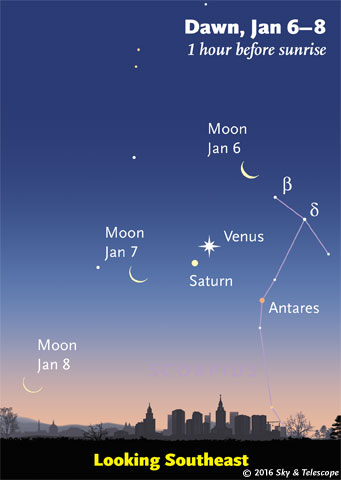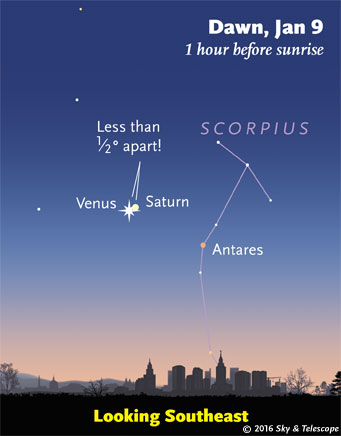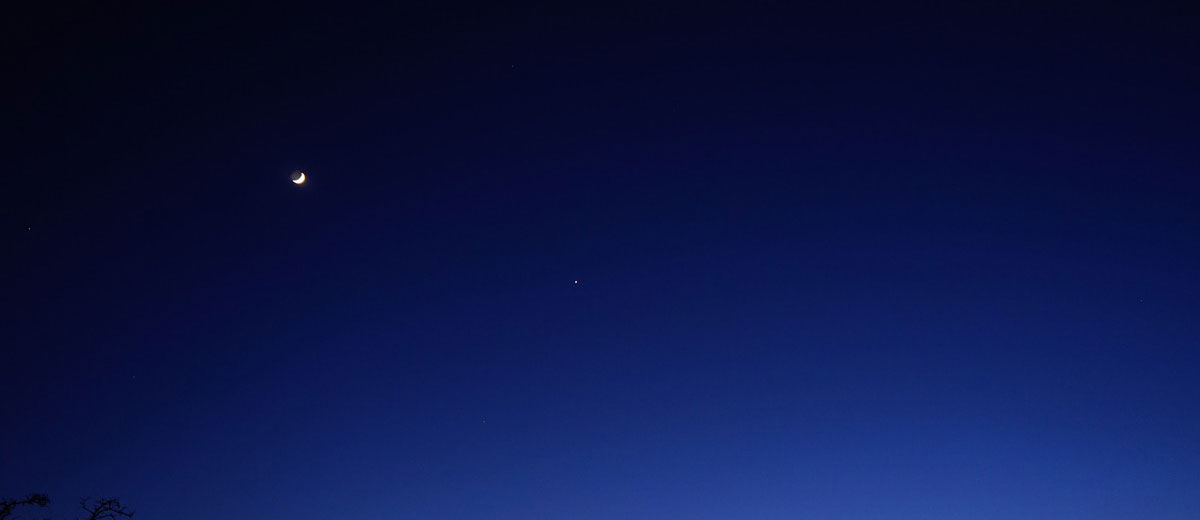Take a look at the sky before dawn this week, and you’ll be able to experience a stunning display of morning planets.
On the morning of January 6, two prominent planets and the moon will have a close grouping in the southeastern sky. Look beneath the moon’s waning crescent to find Venus, the brightest “star-like” object in the night sky, and then shift your gaze downwards slightly to locate Saturn. Saturn will be dimmer than Venus, and you may notice a slightly golden colour when you look at it.

If you miss this grouping on the 6th, be sure to look southeast again on the morning of January 9th. Venus and Saturn will be in conjunction in the wee hours before dawn—being separated by only half a degree. If you have a telescope, this will be a great time to try it out and see the planets in the same field of view. However, they’ll also be lovely to look at with just your naked eye or binoculars.

Fast fact: Not sure whether you’re looking at a star or a planet? Here’s an easy rule. Stars twinkle—planets don’t.
